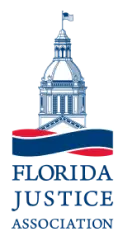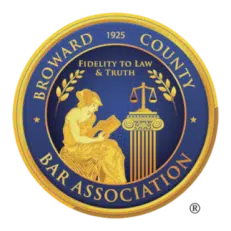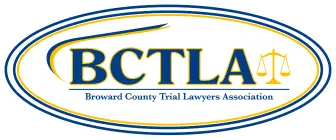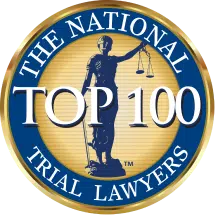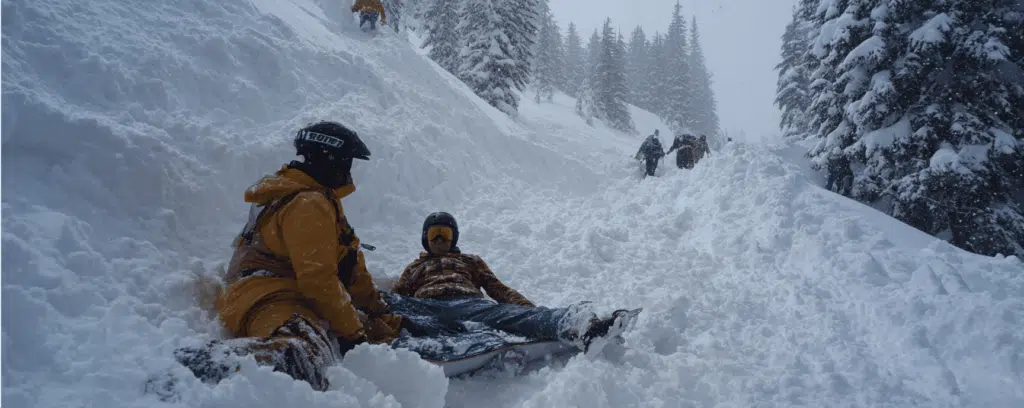
If you’ve been injured in a skiing accident, knowing your legal rights for making a claim is crucial. This article will help you understand skiing accident claims, including the immediate steps to take after an accident, common types of skiing accidents, and how to determine liability. You’ll also learn about the compensation you might be entitled to.
Key Takeaways
- Immediately seek medical attention and document the accident scene for potential legal claims.
- Common skiing accidents include collisions, ski lift malfunctions, and equipment failures, often resulting from negligence.
- Understanding liability and working with experienced attorneys is crucial for navigating ski accident claims and seeking appropriate compensation.
Immediate Steps After a Skiing Accident
When a skiing accident occurs, seeking immediate medical attention is the first priority. Whether the injuries are minor or severe, getting prompt medical care can prevent further complications and create a documented timeline of your injuries. Emergency responders, like the ski patrol, usually stabilize the injured skier on-site and may begin immediate medical care upon arrival. Immediate medical attention is crucial for addressing serious injuries and ensuring the best possible recovery outcome.
Another crucial step is documenting the accident scene, including photographing the location, weather conditions, and any potential hazards that may have contributed to the accident. Additionally, documenting the injuries sustained and collecting contact information from witnesses is vital. Witness accounts offer unbiased perspectives that can clarify the circumstances surrounding the accident. Such documentation can be invaluable for later insurance claims or legal action.
Finally, obtaining an incident report from the ski resort is necessary. The report serves as an official record of the accident and can support your injury claim. Ski resorts are typically required to maintain records of incidents that occur on their premises, and having this documentation strengthens your case. Combining medical records, witness accounts, and the incident report creates a strong foundation for any legal claims you may need to pursue.
Common Types of Skiing Accidents
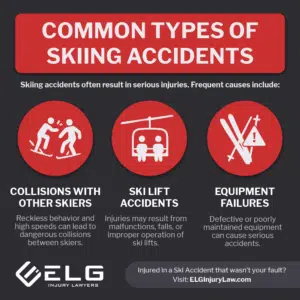
While some accidents are unavoidable, many are caused by the negligence of others. Reckless behavior, failure to follow slope etiquette, and inadequate maintenance by ski resorts can all contribute to skiing accidents. Being aware of the different types of accidents and the factors that increase their likelihood can help you stay vigilant on the slopes and better prepare for handling the aftermath.
Collisions With Other Skiers
Collisions between skiers or snowboarders are a common cause of skiing accidents. These collisions often result from reckless behavior, such as speeding, failing to yield, or skiing under the influence. For instance, an advanced skier going down a beginner slope rapidly and colliding with a beginner is an example of reckless behavior. Such actions can lead to severe injuries and raise questions about liability and negligence, including snowboarding accidents.
The impact of collisions can be devastating, leading to serious injuries such as head trauma, broken bones, and even life-threatening conditions. Following the skier responsibility code, which includes maintaining control and avoiding skiers ahead, is key to preventing these accidents.
When collisions do occur, documenting the incident and gathering witness statements can be crucial in proving negligence and seeking compensation, especially if an accident occurred.
Ski Lift Accidents
Ski lift accidents are another common type of skiing accident, often resulting from equipment malfunctions, improper operation, or passengers falling while boarding or exiting the lift. Factors such as the volume of skiers and the age of the infrastructure can contribute to higher incidents of ski lift accidents. These accidents can lead to severe injuries, making it imperative for ski resorts to regularly inspect and maintain their equipment.
Ski resorts have a legal obligation to ensure the safety of their ski lifts. This includes routine inspections and addressing any maintenance issues promptly. When ski lift accidents occur, the resort management may be held liable if it is found that they failed to take appropriate safety measures. An incident report from the resort can provide valuable evidence in these cases, helping to establish the circumstances surrounding the accident.
Equipment Failures
Defective or poorly maintained ski equipment can lead to skiing accidents, posing significant challenges for both the injured parties and those responsible for the equipment. Regular maintenance of ski equipment is crucial to prevent accidents caused by mechanical failures. When an accident is caused by defective equipment, a product liability claim can be made against the manufacturer or seller. This type of claim seeks to hold the manufacturer responsible for any injuries sustained due to equipment failure.
Inadequate safety measures and poor maintenance can exacerbate the risks associated with skiing. Ensuring that your equipment is in good condition and follows all appropriate precautions can help prevent accidents.
If an accident does occur due to equipment failure, documenting the incident and retaining the defective equipment and malfunctioning equipment can support your claim and improve your chances of receiving compensation.
Let's Settle For More... Get Your FREE Case Review Today.
Let's Settle For More... Get Your FREE Case Review Today.
Understanding Ski Injuries
Skiing and snowboarding involve inherent risks, including high speeds, challenging terrain, and crowded slopes. These factors can lead to a wide range of injuries, from minor sprains to life-threatening conditions. Common ski injuries associated with skiing accidents include ACL and MCL tears, which can significantly impact injured skiers’ mobility and overall quality of life. Understanding the types of injuries that can occur in winter sports, including skiing or snowboarding, is essential in recognizing the severity of an accident and seeking appropriate medical care.
Visiting a healthcare provider immediately after an accident creates a documented timeline of injuries, which plays a critical role in personal injury claims. Medical records can help establish the severity and causation of injuries, supporting your case when seeking compensation. These records are crucial in demonstrating the impact of the accident on your health and well-being.
Head Injuries
Head injuries are among the most common and severe injuries resulting from skiing accidents. Concussions and traumatic brain injuries (TBIs) are frequently reported, making them a significant concern for skiers. These injuries can have long-lasting effects, impacting cognitive function and overall quality of life. Certain states have laws that mandate children below a specific age to wear helmets while skiing. This highlights the significance of implementing preventive measures.
Wearing helmets significantly reduces the severity of head injuries in skiing accidents. Wearing helmets while skiing can prevent accidents and mitigate the impact of any falls or collisions.
Immediate medical attention for a suspected head injury is crucial, as early intervention can improve outcomes and support your personal injury claim. If you experience symptoms, it should be immediately apparent that you should seek medical attention immediately to strengthen your injury claim and assist the injured person.
Spinal Cord Injuries
Spinal cord injuries are another serious consequence of skiing accidents. Severe spinal injuries can occur due to falls or high-speed collisions. These injuries may result in permanent disability or paralysis. These injuries often require extensive medical treatment and rehabilitation, significantly impacting the injured person’s quality of life. The long-term effects of spinal cord injuries can include chronic pain, loss of mobility, and other serious health complications.
The severity of spinal cord injuries highlights the importance of immediate medical attention and proper accident documentation. Medical records and expert testimony can support your personal injury claim, demonstrating the impact of the accident on your health and well-being.
Legal advice from experienced ski accident attorneys can help navigate these cases and secure compensation for ongoing care.
Fractures and Broken Bones
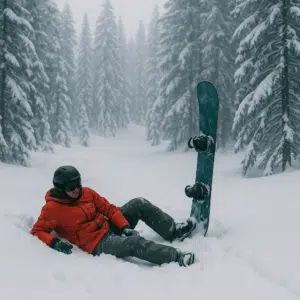
- broken legs
- broken arms
- broken wrists
- broken collarbones
These injuries can be particularly debilitating, requiring medical treatment and extended recovery periods. Fractures of the wrist are especially common, as skiers often use their hands to break their falls.
Proper medical care and rehabilitation are crucial for recovering from fractures and broken bones. Medical records detailing the extent of the injuries and the treatment received can support your personal injury claim. Seeking compensation for medical bills, medical expenses, lost wages, and other related damages can help alleviate the financial burden of these injuries and support your recovery.
Legal Considerations in Skiing Accident Claims
Navigating the legal landscape after a skiing accident can be complex. Determining liability is critical in skiing accident claims, as it establishes who is responsible for the injury. Attorneys must provide evidence that a resort’s negligence increased the risk of harm in skiing accident cases. This involves gathering evidence, such as medical records and witness statements, to build a strong case.
Ski resorts have a legal obligation to maintain safe conditions for their guests. Challenging liability waivers often hinges on proving they are ambiguous or violate public policy. Knowing these legal considerations and working with experienced ski accident attorneys can help you navigate your claim’s complexities and seek the compensation you deserve.
Determining Liability
Determining liability in skiing accidents involves identifying the parties responsible for the accident. Liability can fall on individual skiers, resorts, or equipment manufacturers based on the circumstances. Negligence can be established by showing that a skier’s behavior was unreasonable and directly led to the accident. Factors such as adherence to the Skier Responsibility Code and speed play a crucial role in determining liability.
A ski resort may be held responsible if it fails to mark hazards or does not maintain equipment properly. Gathering evidence, like medical records and witness statements, is crucial for building a strong case of ski resort negligence.
Experienced attorneys can identify all potentially liable parties in a ski accident, maximizing your recovery chances.
Resort Liability Waivers
Resort liability waivers are intended to safeguard ski resorts from lawsuits related to injuries sustained on their premises. The enforceability of a liability waiver may depend on whether it meets specific legal standards outlined in state law. In Oregon, for example, a liability waiver is generally enforceable if it is clear, specific, and doesn’t violate public policy.
Challenging these waivers’ enforceability can be complex and often requires proving the waiver is ambiguous or violates public policy. Plaintiffs face challenges in proving the enforceability of liability waivers in ski accident cases and may need to challenge them to pursue compensation.
Working with experienced ski accident attorneys can help navigate these challenges and seek justice.
| Skiing Accident Claims: Your Legal Rights Explained — ELG Injury Lawyers | |
|---|---|
| Key Takeaways | Seek medical attention immediately, document the scene, understand your legal rights, and retain experienced counsel to pursue appropriate claims. |
| Immediate Steps After an Accident |
|
| Common Types of Skiing Accidents |
|
| Types of Injuries |
|
| Legal Considerations & Liability |
|
| Compensation You Can Seek | You may recover past & future medical expenses, lost wages and benefits, emotional distress, loss of enjoyment or companionship, and other damages if negligence is shown. |
| Legal Process / Steps Forward |
|
| Why Hire ELG | ELG brings experience in handling ski accident claims, works on contingency (they’re paid only if you win), and offers a free consultation to get started. |
| ELG Injury Lawyers • “Let’s Settle For More.” • Free Case Review: 561-338-0420 | |
Proving Negligence in Skiing Accidents
Proving negligence in skiing accidents requires demonstrating that an injury resulted from factors beyond the inherent risks of skiing. Effective depositions can reveal reckless behavior and challenge claims made by defendants in skiing accident cases. Depositions, affidavits, or witness testimony are necessary to prove negligence or recklessness.
Expert testimony is important in skiing accident claims, as it establishes that a resort’s actions or inactions breached industry standards and created hazards. Comprehensive discovery is essential for uncovering critical evidence and building a strong case through a thorough investigation.
Experienced ski accident attorneys can navigate this process, ensuring all necessary evidence is gathered to support your claim.
Seeking Compensation for Skiing Accidents
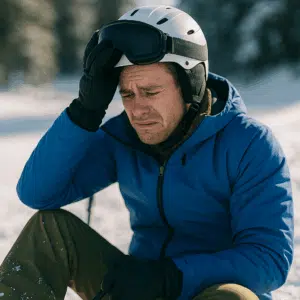
- Past and future medical expenses
- Loss of earnings and employee benefits due to the accident
- Damages for physical and emotional distress experienced by the victim
- Loss of companionship or enjoyment of life, if negligence is proven
Negotiations with an insurance company are a common step in seeking a fair settlement before considering a trial.
Experienced ski accident attorneys can accurately assess the total damages you may claim, beyond just medical costs. Securing fair compensation and ensuring you receive fair compensation can help alleviate the financial burden and support your recovery.
The Legal Process for Skiing Accident Claims
The legal process for skiing accident claims involves several steps:
- Experienced lawyers collect and analyze evidence to enhance the strength of your case.
- Most ski accident cases are settled out of court through negotiations.
- Attorneys negotiate with insurance companies to secure a fair settlement.
If a fair settlement is not reached, the case may go to trial, and having an experienced attorney ensures your legal rights and interests are protected. Understanding the legal process can help plaintiffs feel informed and prepared as their case progresses.
Why Hire ELG Injury Lawyers?
Hiring skilled attorneys like ELG Injury Lawyers can significantly improve the outcome of your skiing accident case and your personal injury case. Experienced ski accident attorneys understand the complexities of personal injury claims and can navigate the legal process for you. We work on a contingency fee basis, meaning we get paid only if you win, ensuring they are fully invested in achieving the best outcome for you.
The legal process begins with a free consultation to discuss your case details with an attorney. This helps establish a clear understanding of the circumstances and the potential for financial compensation.
If negotiations fail, the case may go to trial, where your attorney will present evidence to support your legal claim. Understanding this process can make plaintiffs feel more informed and prepared as their case progresses.
Frequently Asked Questions
What should I do immediately after a skiing accident?
After a skiing accident, seek medical attention right away, document the accident scene, collect witness information, and obtain an incident report from the ski resort. This will ensure you have the necessary details for any follow-up actions.
What are the common causes of skiing accidents?
Skiing accidents commonly result from collisions with other skiers, equipment failures, and ski lift malfunctions, often exacerbated by high speeds and challenging conditions. Being aware of these risks can help you ski more safely.
How can I prove negligence in a skiing accident?
To prove negligence in a skiing accident, you must show that the injury was caused by specific factors rather than just the inherent risks of skiing. This can be established through depositions, witness accounts, and expert testimonies.
What types of compensation can I seek after a skiing accident?
You can seek compensation for past and future medical expenses, lost wages, emotional distress, loss of companionship, and potentially punitive damages if the responsible party was severely negligent. It’s essential to document all related costs and impacts to support your claim effectively.
Why should I hire ELG Injury Lawyers for my skiing accident claim?
Hiring ELG Injury Lawyers for your skiing accident claim is a smart choice due to their expertise in complex personal injury cases and contingency fee structure, ensuring you only pay if you win. Their comprehensive legal support maximizes your chances for the best possible outcome.
Related Article(s)
Who Is at Fault in a Ski Accident?
Last updated Thursday, September 25th, 2025
